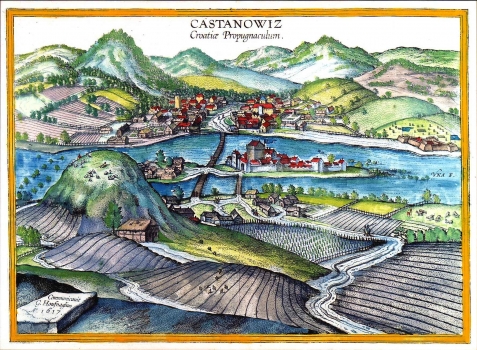HOEFNAGEL, GEORG: VIEW OF THE TOWN OF KOSTAJNICA
After being forced out of Petrinja, in 1596, Turks established a new defense position on the river Una. Kostajnica became this way the key-fortress that guarded the northwest entrance to Bosnia. Because of its exceptional strategic importance, the Hapsburg military cartographers made in secret a sketch of Kostajnica and the nearby land. The best succeeded of the views of Kostajnica created at that occasion was exactly the map made by Georg Hoefnagel. It was included in the 1618 edition of "Topography" published by Braun. It shows Kostajnica as it was while being entirely under Turkish rule. The settlement consisted, the same as today, of three distinct parts: the greater part of the settlement comprising a Turkish-style centre (which is today Bosanska Kostajnica) situated on the right-side bank of the river Una. A wooden bridge provided a way across the river Una connecting the old town with the river islet and the fortress on it, as well as with the part of Kostajnica on the left riverbank (present-day Hrvatska Kostajnica). The title of the map is across the upper margin edge.

